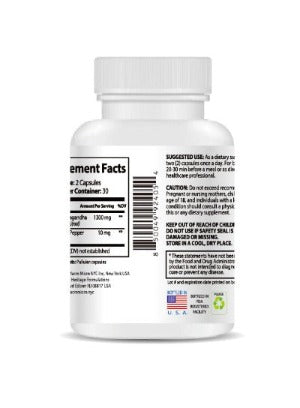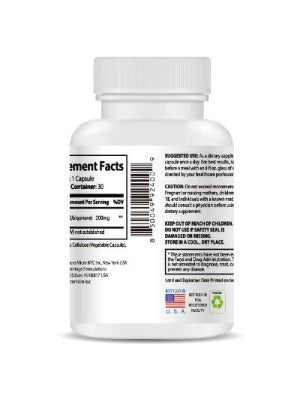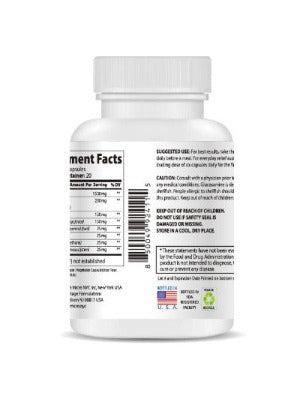If you wear contact lenses and spend a lot of time on screens, you’ve likely experienced the frustration of tired, dry, or irritated eyes. It's a common issue, and it's not a coincidence. The combination of contact lens wear and extended screen time is a major contributor to dry eye syndrome. While it might feel like an inevitable part of modern life, you have more power than you think to prevent your symptoms from getting worse.
This article will help you understand why this combination is so problematic and provide you with actionable steps to protect your eyes and maintain your comfort.
Why Screens and Contacts Are a Recipe for Dry Eyes
To grasp the problem, you need to understand the basic mechanics of how your tears work. Your tear film, the protective layer on the surface of your eye, has three main components: a watery layer, a mucus layer, and a crucial outer oil layer. This oil layer, produced by tiny glands in your eyelids, acts like a shield, preventing your tears from evaporating too quickly.
-
The Contact Lens Factor: A contact lens sits directly on your eye, which can interfere with the tear film's stability. It can disrupt the natural flow of tears and, for some people, it can affect the function of those important oil glands.
-
The Digital Screen Factor: When you're focused on a screen, you tend to blink less frequently and less completely. A proper blink is a full, deliberate closure of your eyelids. This action is essential because it spreads fresh tears across your eye and helps release the oil from your eyelid glands. When you don't blink properly, your tear film evaporates quickly, leaving your eyes exposed and dry.
When you combine these two factors, you create a vicious cycle. The contact lens may already be disrupting your tear film, and your poor blinking habits from screen use make the problem significantly worse, leading to chronic discomfort and potential long-term issues.
5 Ways to Stop the Cycle and Protect Your Eyes
Taking proactive measures is key. Here are five practical, simple strategies to help you manage your symptoms and prevent them from escalating.
1. Practice the Power of Conscious Blinking
This is one of the most effective, no-cost things you can do. Most people don’t realize how infrequently they blink when focused on a screen.
-
The Full Blink: Throughout the day, make a conscious effort to close your eyes completely, almost in a deliberate squeeze. This action helps to release the necessary oils from your meibomian glands and resurface your eyes with fresh tears.
-
Set Reminders: Use a timer on your phone or a simple sticky note on your monitor to remind you to blink fully every few minutes.
2. Implement the "20-20-20 Rule"
This rule is a classic for a reason—it works. It forces you to take a break and helps your eyes reset.
-
How it Works: Every 20 minutes, look at something at least 20 feet away for 20 seconds. This simple act relaxes your eye muscles, reduces strain, and encourages you to look away from your bright screen. Make it a habit by setting a recurring timer.
3. Optimize Your Environment
Your surroundings can play a huge role in your eye comfort.
-
Add Moisture to the Air: Air conditioning and heating systems can dry out the air, which in turn dries out your eyes. Use a humidifier at your desk or in your bedroom to add much-needed moisture back into the environment.
-
Mind the Air Flow: Avoid sitting directly in front of fans, air vents, or open windows, as a constant draft of air can significantly accelerate tear evaporation.
4. Give Your Eyes a Break from Contact Lenses
As convenient as contact lenses are, they are still a foreign object on your eye. Giving your eyes a break is one of the best things you can do to promote their natural health.
-
Wear Glasses at Home: Make it a habit to take your contacts out as soon as you get home. Give your eyes a rest in the evenings and on weekends by wearing your glasses.
-
Rotate Between Contacts and Glasses: If you're planning a long screen session—whether for work or gaming—consider starting the day in your glasses to reduce the strain on your eyes.
5. Prioritize Your Overall Wellness
Your eye health is connected to your overall body health.
-
Stay Hydrated: Drinking enough water is crucial for all bodily functions, including tear production. Dehydration can lead to a decrease in tear volume.
-
Eat for Eye Health: Incorporate foods rich in Omega-3 fatty acids, such as salmon, flaxseed, and walnuts. These healthy fats are known to support the oil-producing glands in your eyelids and can have an anti-inflammatory effect that benefits your eyes.
If you’re experiencing persistent, worsening symptoms, it's essential to consult an eye care professional. They can provide an accurate diagnosis and create a personalized plan to help you manage your symptoms effectively and protect your long-term eye health. Taking control of your dry eye symptoms is not just about comfort; it's about safeguarding your vision for the future.
Q&A for Eye Discomfort
Here are five common questions and answers to help you navigate your eye discomfort and find lasting solutions.
Q1: Why do my eyes feel fine in the morning but get worse as the day goes on? A1: This is a classic pattern for contact lens and screen users. Your eyes have had a full night to rest and replenish their tear film. As the day progresses, continuous screen use and contact lens wear deplete your tear film, leading to increasing dryness, grittiness, and discomfort.
Q2: Is it okay to use rewetting drops for my contact lenses? A2: Yes, but it is critical to use drops specifically formulated for contact lens wearers. Using standard eye drops while wearing contacts can cause damage to the lens or trap certain ingredients against the eye. Always check the label and, if in doubt, ask your eye care professional for a recommendation.
Q3: I've heard that different types of contact lenses can help with dry eye. Is that true? A3: Yes. There are many types of contact lenses available today, including daily disposables and lenses made from materials designed to retain more moisture. If your current lenses are causing discomfort, your eye care professional may be able to recommend a lens type that is better suited for your eyes and lifestyle.
Q4: Should I worry if my vision gets a little blurry at the end of the day? A4: Blurry vision that clears up with a blink or a moment of rest is a common symptom of dry eye. The dry patches on your cornea can distort light, leading to temporary blurriness. It's a sign that your tear film is no longer stable, and it's a clear signal that you need to give your eyes a break.
Q5: Can I tell if my dry eye is caused by my contacts or just screen time? A5: It can be difficult to separate the two, as they often work together. A simple test is to wear your glasses for an entire day while still using a screen as you normally would. If your symptoms are significantly better, your contact lenses are likely a major contributor. However, if symptoms persist, it's more likely a combination of factors, and consulting a professional for an official diagnosis is the best next step.









